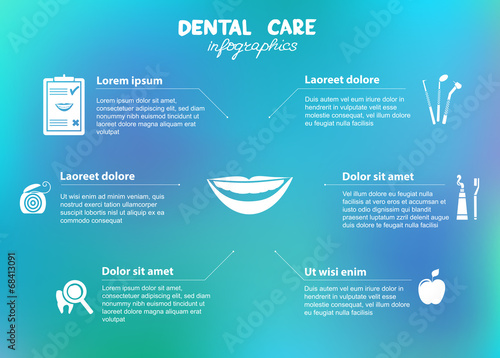The Horizon Of Oral Surgery: Revolutionary Innovations And Enhancements Shaping The Profession
The Horizon Of Oral Surgery: Revolutionary Innovations And Enhancements Shaping The Profession
Blog Article
Content Writer-Kokholm Browne
Invite to the globe of oral surgery, where technologies and developments are shaping the future of the area! In this amazing world, you'll witness the transformative power of robotics, the advanced wonder of 3D printing, and the game-changing effect of minimally invasive techniques.
The future of oral surgery holds an assurance of precision, performance, and enhanced client outcomes. With the help of advanced robotics, cosmetic surgeons are able to perform intricate treatments with better accuracy and control.
3D printing technology is reinventing the development of dental implants and prosthetics, offering tailored options that fit effortlessly into each individual's unique composition.
Additionally, minimally invasive techniques are minimizing post-operative discomfort and recuperation time, permitting clients to return to their every day lives faster.
Get ready to check out the exciting technologies and advances that are improving the landscape of dental surgery!
Developments in Robotics
One major improvement in dental surgery is using robot modern technology, which allows for exact and effective surgical procedures. With the help of robotic systems, dental doctors have the capacity to perform intricate surgical procedures with improved accuracy, lessening the risk of human error.
These robotic systems are equipped with advanced imaging modern technology and exact tools that enable surgeons to browse through elaborate physiological frameworks easily. By utilizing robotic innovation, surgeons can achieve greater surgical accuracy, leading to boosted person outcomes and faster recovery times.
Additionally, the use of robotics in oral surgery allows for minimally intrusive procedures, minimizing the injury to bordering cells and advertising faster recovery.
3D Printing in Oral Surgery
To boost the area of dental surgery, you can explore the subtopic of 3D printing in dental surgery. This ingenious technology has the prospective to revolutionize the way oral cosmetic surgeons operate and treat clients. Here are https://casheopqw.blogoscience.com/39220400/the-relevance-of-very-early-treatment-in-gum-economic-crisis-treatment which 3D printing is forming the field:
- ** Personalized Surgical Guides **: 3D printing allows for the creation of highly precise and patient-specific medical guides, improving the precision and efficiency of treatments.
- ** Implant Prosthetics **: With 3D printing, dental specialists can produce personalized dental implant prosthetics that flawlessly fit an individual's special anatomy, causing far better results and person fulfillment.
- ** Bone Grafting **: 3D printing enables the production of patient-specific bone grafts, reducing the requirement for standard implanting techniques and enhancing healing and healing time.
- ** https://all-on-6-dental-implants84940.atualblog.com/39217040/can-anyone-make-use-of-invisalign-what-to-know and Educating **: 3D printing can be used to produce realistic medical models for instructional purposes, permitting oral surgeons to exercise complicated procedures before performing them on patients.
With its prospective to boost accuracy, personalization, and training, 3D printing is an interesting growth in the field of oral surgery.
Minimally Invasive Methods
To better advance the area of dental surgery, welcome the potential of minimally invasive strategies that can greatly benefit both specialists and people alike.
Minimally intrusive strategies are transforming the area by lowering surgical trauma, decreasing post-operative pain, and speeding up the recuperation procedure. These methods include utilizing smaller sized cuts and specialized tools to do treatments with precision and efficiency.
By using innovative imaging innovation, such as cone beam of light computed tomography (CBCT), doctors can accurately prepare and perform surgical procedures with minimal invasiveness.
Furthermore, using lasers in oral surgery permits accurate tissue cutting and coagulation, leading to lessened bleeding and reduced healing time.
With minimally intrusive techniques, people can experience much faster recovery, decreased scarring, and improved results, making it a crucial element of the future of oral surgery.
Final thought
So, as you can see, the future of dental surgery is incredibly promising, with amazing technologies and developments forming the field.
From https://www.news-medical.net/health/Tooth-Extraction-Risks.aspx in robotics to the use of 3D printing and minimally invasive techniques, oral doctors are transforming the means they offer care.
While https://brookssniex.howeweb.com/33619651/how-much-time-do-dental-implants-last-elements-that-influence-longevity may bother with the potential price connected with these developments, it is necessary to keep in mind that these innovations ultimately boost individual end results and reduce recuperation time, making them well worth the financial investment in the future.
